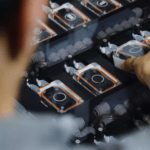North Carolina Supreme Court Greenlights Claims Against Insurance Agent

By: James Lawrence, Partner
Last week, in an opinion with implications for small businesses and insurance brokers, the Supreme Court of North Carolina ruled that a homeowner who “trusted” in an insurance agent’s “assurance that it would accurately fill out the application” stated a claim for negligence and punitive damages.
Jones v. J. Kim Hatcher Insurance Agencies, Inc. arose out of a relationship between a homeowner and an insurance agent that dates back to 2014. Jones alleged the following in his complaint. In August 2016, the insurance agent presented Jones with a single-page application form and instructed him to sign. The company “did not ask Jones any questions regarding his property or the application.” The following year, the agent presented Jones with another application with pre-printed text: “I have read the above application and any attachments and declare that the information is true and complete.” But the company told Jones he did not need to fill in the application only that he needed to sign “and pay the first payment.”
Fast forward to 2018. Hurricane Florence “substantially damaged Jones’s home and property.” The insurer refused to pay Jones because his application—the one the agent told Jones he did not need to fill in—“did not mention his pond or accurately describe his property acreage.”
Jones sued, among other parties, the agent and the insurer. The trial court largely dismissed the case at the Rule 12 stage. The North Carolina Court of Appeals reversed on the negligence claim, declining to find Jones was contributorily negligent, a bar to liability in North Carolina. The Court of Appeals affirmed dismissal of the punitive damages claim.
The North Carolina Supreme Court affirmed reinstatement of the negligence claim and reversed the Court of Appeals on punitive damages. Regarding negligence, while the North Carolina Supreme Court affirmed that “everyone who can read a document has a duty to do so when signing it,” but pointed to a 1921 case that such a duty “is subject to the qualification that nothing has been said or done to mislead him or to put a man of reasonable business prudence off his guard in the matter.” In the court’s view, Jones’s allegations regarding the insurance agent’s “specific assurances and the course of prior dealings between them” were sufficient for purposes of Jones being “off his guard.” The court likewise found Jones’s pleading of punitive damages sufficient in view of his allegation that the insurance agent “while acting as his agent to procure him insurance coverage, knowingly mispresented basic information about Jones’s property.”
The Jones opinion gives small business owners who entrust agents to fill out applications at least some comfort, at least where they have carried on a long-term relationship with an agent. The decision might breathe new life into claims that were otherwise denied by insurers. Insurance agents, by contrast, are now on notice of the potential pitfalls of taking on such duties. The fine print in application documents might not be enough to stave off costly litigation.




